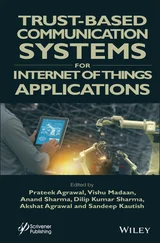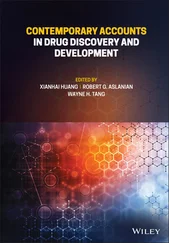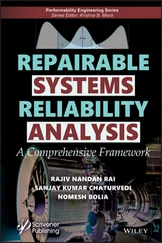18 Chapter 18Figure 18.1 Illustration: NR control plane: AS and NAS protocol layers.Figure 18.2 Illustration: 5G SM UE‐initiated PDU session establishment proce...Figure 18.3 Illustration: 5GS session and service continuity (SSC) modes 1 a...Figure 18.4 Illustration: 5G SM PDU sessions for different network slices.Figure 18.5 Illustration: association/control of QoS – EPS bearer versus QoS...Figure 18.6 Illustration: binding of SDF and LTE/EPS bearer and SDF and 5GS ...Figure 18.7 Illustration: SDAP layer: mapping between QoS flow and data radi...Figure 18.8 Illustration: 5GS downlink data flow through GTP‐U tunnels.Figure 18.9 Different states of a cell in a cellular communication.Figure 18.10 Illustration: GSM, GPRS, UMTS, LTE PLMN, and LA/RA.Figure 18.11 Illustration: Mobility areas controlled by core network element...Figure 18.12 Illustration: mobility management areas for CS and PS domains....Figure 18.13 Illustration: LTE/EPS: list of TAs in the TA list.Figure 18.14 Illustration: 5G mobility areas – TA and RA.Figure 18.15 Illustration: CM and MM state transitions in a UE‐initiated ser...Figure 18.16 Illustration: on‐demand SI request by UE.Figure 18.17 Illustration: NR RRC layer state’s machine, its triggers, and t...Figure 18.18 Illustration: UE RRC_INACTIVE state and RNA.Figure 18.19 Illustration: UE triggered transition from RRC_IDLE to RRC‐CONN...Figure 18.20 Illustration: RRC layer state transition from RRC_INACTIVE to R...Figure 18.21 Illustration: RNA update procedure: normal and erroneous scenar...Figure 18.22 Different phases of a handover procedure.Figure 18.23 Illustration: Xn handover and its signaling messages.Figure 18.24 Illustration: N2‐based handover and its signaling messages.Figure 18.25 Illustration: NR admission control procedure for different netw...
19 Chapter 19Figure 19.1 Illustration: NR air interface user plane protocol layers.Figure 19.2 Illustration: splitting of DRB by the PDCP layer in an EN‐DC set...Figure 19.3 Illustration: packet duplication by the PDCP layer.Figure 19.4 NR: RLC layer Entity Model.Figure 19.5 Illustration: comparisons of LTE and NR RLC layer SDU segmentati...Figure 19.6 Illustration: typical inputs and outputs of a scheduler algorith...Figure 19.7 Illustration: uplink: dynamic and configured scheduling Type 1 a...Figure 19.8 Illustration: NR RACH resource selection procedure.Figure 19.9 Illustration: NR UE RACH RAR process flow, TS 38.321 [113].Figure 19.10 Illustration: NR UEs contention‐based RACH procedure.Figure 19.11 Illustration: NR UE RACH procedure contention resolution flow....Figure 19.12 Illustration: NR contention‐free UE RACH procedure.Figure 19.13 Illustration: UE downlink data reception and its HARQ ACK/NACK ...Figure 19.14 Illustration: NR UE MAC layer scheduling request to NG‐RAN.Figure 19.15 Illustration: organizations of NR MAC SDU, CE, and padding of a...Figure 19.16 Illustration: packet processing by LTE and NR L2 layers.Figure 19.17 Illustration: NR air interface channel types.Figure 19.18 Illustration: types of NR channels and their implementation usi...Figure 19.19 Illustration: duplex (FDD, TDD) transmissions methods.Figure 19.20 Illustration: symbol constellation diagram for 64 QAM modulatio...Figure 19.21 Illustration: NR frames, subframes, and durations.Figure 19.22 Illustration: NR numerologies, frame, subframes, and slots.Figure 19.23 Illustration: NR TDD: DL‐UL timeslot format allocation pattern ...Figure 19.24 Illustration: NR TDD: slot formats of OFDM symbols of a slot.Figure 19.25 Illustration: NR resource grid, resource element, and resource ...Figure 19.26 Illustration: CORESETs allocation for PDCCH.Figure 19.27 Illustration: VRB to PRB mapping in NR.Figure 19.28 Illustration: NR common resource blocks and their reference poi...Figure 19.29 Illustration: UEs transmission/reception with wideband as well ...Figure 19.30 Illustration: aggregated channel bandwidth of CA in the NR FR1 ...Figure 19.31 Illustration: configuration of BWPs and PRBs with different SCS...Figure 19.32 Illustration: an NR bandwidth part, CRB, PRB, and VRB mapping....Figure 19.33 Illustration: resource allocation Type 0 in the NR frequency do...Figure 19.34 Illustration: Type 1 resource allocation to a PDSCH.Figure 19.35 Illustration: time‐domain resource allocation for PDSCH by RRC ...Figure 19.36 Illustration: (FDD) time‐domain resource allocation for PDSCH: ...Figure 19.37 Illustration: physical layer processing stages for a transport ...Figure 19.38 Illustration: physical layer processing chain for a transport b...Figure 19.39 Illustration: components of an LDPC codeword.Figure 19.40 Illustration: LDPC base graphs: BG1 and BG2.Figure 19.41 Illustration: NR UL‐SCH and UCI processing chains and their mul...Figure 19.42 Illustration: output of transport block coding process at physi...Figure 19.43 Illustration: an LDPC parity check matrix and its graph represe...Figure 19.44 Graphical representation of LDPC encoded bit string: 11001111....Figure 19.45 Illustration: NR multiple antenna configurations and transmissi...Figure 19.46 Illustration: mapping of logical antenna port to a physical ant...Figure 19.47 Illustration: transmit diversity: code word to layer mappings....Figure 19.48 Illustration: spatial multiplexing: code words to layers mappin...Figure 19.49 Illustration: physical layer channel processing steps.Figure 19.50 Illustration: LTE vs. NR PDCCH resource allocation.Figure 19.51 Illustration: PDCCH monitoring using search space with aggregat...Figure 19.52 Illustration: transmission flow of a DCI.Figure 19.53 Illustration: DCI processing chain.Figure 19.54 Illustration: code block group‐based downlink transmission and ...Figure 19.55 Illustration: FDD: PDSCH to its HARQ‐ACK timing.Figure 19.56 Illustration: TDD: PDSCH to its HARQ‐ACK timing with K1 = 0.Figure 19.57 Illustration: mapping of DMRS to resource element and OFDM symb...Figure 19.58 Illustration :mapping of PDCCH and its DMRS to REs and an OFDM ...Figure 19.59 Illustration: time‐domain resource allocation for SRS.Figure 19.60 Illustration: position of PSS, SSS, PBCH‐DMRS within an SS bloc...Figure 19.61 Illustration: organization of SS blocks/burst in the time domai...Figure 19.62 Illustration: organization of SS blocks/burst in the time domai...Figure 19.63 Illustration: positions of SS blocks in the time domain for Cas...Figure 19.64 Illustration: NR beam management procedures.Figure 19.65 Illustration: NR beam sweeping with multiple beams.Figure 19.66 Illustration: NR beam failure recovery procedure.Figure 19.67 Illustration: UE RLF due to out‐of‐synchronization indication/B...Figure 19.68 Illustration: NR RRM measurements framework.Figure 19.69 Illustration: NR RRM measurement gap and SMTC window.Figure 19.70 Illustration: NR measurements process.Figure 19.71 Illustration: Type I CSI reporting with a single‐panel antenna ...Figure 19.72 Illustration: NR CQI (MCS) vs. data throughput.Figure 19.73 Illustration: NR RACH: CP and preamble sequences lengths for SC...Figure 19.74 Illustration: NR RACH occasions for FR2 and FDD modes.Figure 19.75 Illustration: NR RACH occasions in frequency domain.Figure 19.76 Illustration: 5G NR RRM procedure and its sub‐tasks for differe...Figure 19.77 Illustration: Configuration of RRM Messages Flow in NG‐RAN/gNB...Figure 19.78 Illustration: RRM Allocation of Four BWPs to a UE for eMBB Use ...Figure 19.79 Illustration: Evolution of the 5G NR RRM Procedure
20 Chapter 20Figure 20.1 Illustration: LTE/EPS UE ATTACH procedure without CUPS.Figure 20.2 Illustration: LTE/EPS UE ATTACH procedure with CUPS feature.Figure 20.3 Illustration: 5GC CUPS: interaction between control plane and us...Figure 20.4 Illustration: service interfaces‐based architecture of 5G system...Figure 20.5 Illustration: reference points‐based architecture of 5G system....Figure 20.6 Illustration: network function interface, services, and its oper...Figure 20.7 Illustration: 5GC network functions service operation flow.Figure 20.8 Illustration: 5GC network functions services framework.Figure 20.9 Illustration: registration, authorization, and discovery of netw...Figure 20.10 Illustration: status of network function instance at NRF.Figure 20.11 Illustration: usages for heart beat timer for NF status.Figure 20.12 Illustration: communications among 5GC control plane network fu...Figure 20.13 Illustration: usages of a service API and HTTP PUT method for S...Figure 20.14 Illustration: usages of a service API and HTTP GET method for r...Figure 20.15 Illustration: usages of a service API and HTTP DELETE method to...Figure 20.16 Illustration: discovery of a network function instance and serv...Figure 20.17 Illustration: usages of a service API and HTTP POST method to t...Figure 20.18 Illustration: 5G core network functions virtualizations.Figure 20.19 Illustration: virtualization with virtual machines.
Читать дальше












